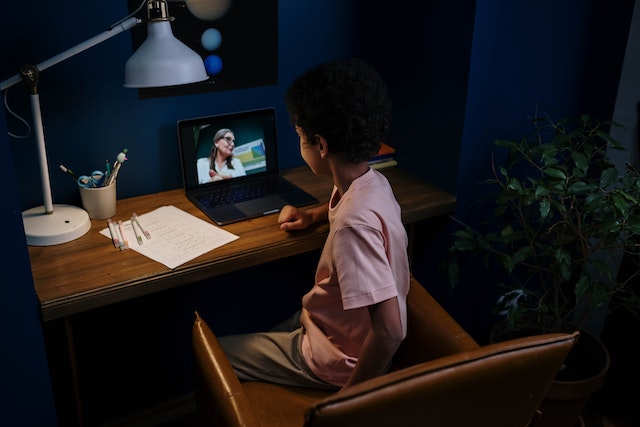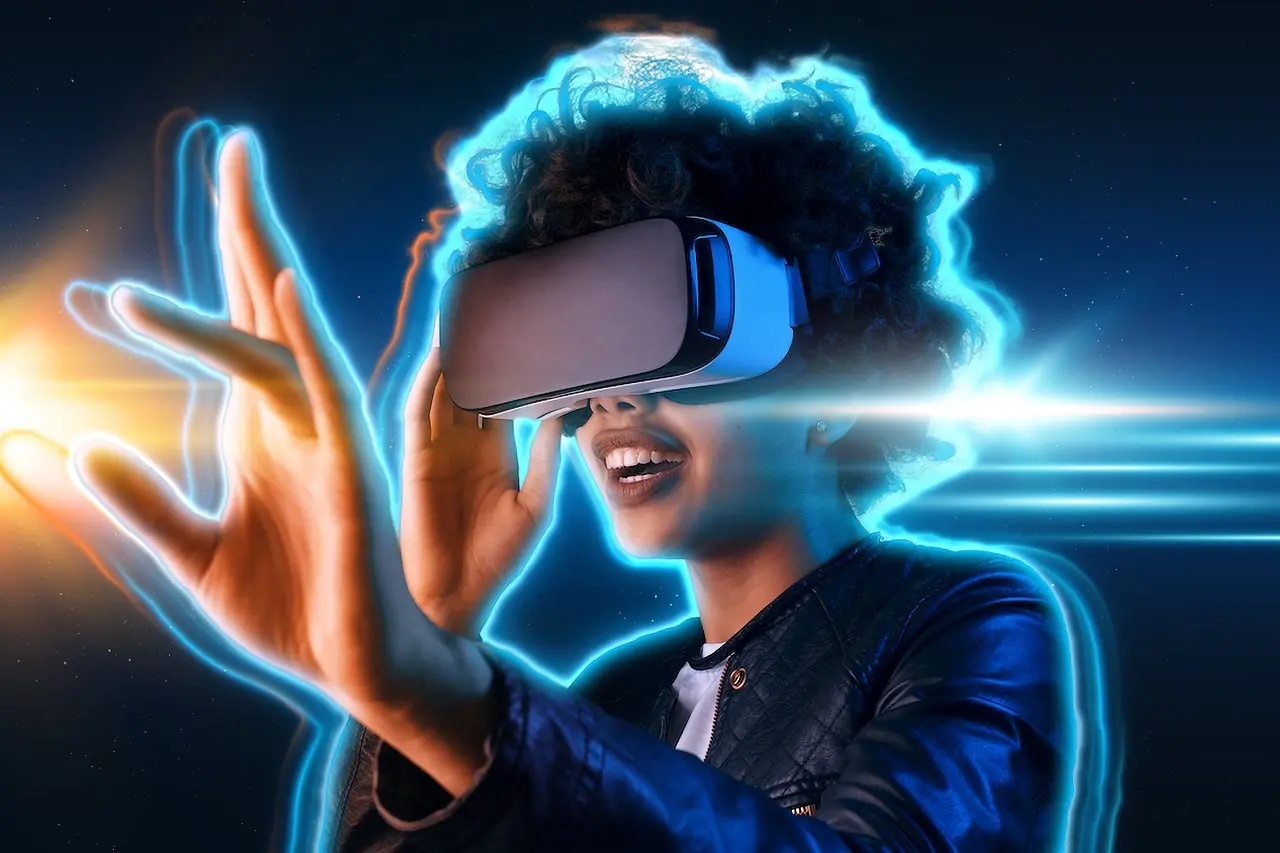The Role of Internet Connectivity
The internet connects remote learning, enabling seamless access to resources, real-time interaction, and flexible learning. Reliable internet is vital for engaging in virtual classrooms, collaborating, and accessing materials. It bridges the digital divide, ensuring equal opportunities for all students. With internet connectivity, remote learning empowers students regardless of location or background. As reliance on remote learning grows, internet access remains crucial for academic success. In conclusion, the internet’s role in remote learning is pivotal. It fosters connectivity, collaboration, and inclusive education. Efforts to provide reliable internet access must continue to support effective remote learning.
Definition of Remote Learning: Internet Connects Education from Afar
To illustrate, remote learning refers to the process of acquiring knowledge and skills through virtual platforms, utilising digital resources and online communication tools. It offers flexible learning opportunities, enabling students to access educational materials and engage in academic activities remotely.
Growing Importance of Remote Learning
Remote learning has gained immense popularity and importance for several reasons. Firstly, it provides access to a vast array of online resources that enhance the learning experience. Students can explore interactive content, educational videos, and e-books, expanding their knowledge beyond traditional textbooks.
Need for Reliable Internet Connectivity in Remote Learning: The Vital Link
However, to fully harness the benefits of remote learning, a reliable internet connection is indispensable. Seamless and uninterrupted internet access enables students to leverage the wealth of online educational materials and engage in real-time communication with their teachers and peers.
Moreover, reliable internet connectivity fosters effective communication and collaboration. Through virtual classrooms and video conferencing tools, students can actively participate in discussions, seek clarifications, and receive timely feedback from their instructors.
Furthermore, reliable internet connectivity provides flexibility and convenience. Students can learn from anywhere, at their own pace, and balance their education with other commitments. This accessibility eliminates geographical barriers, enabling students from rural or remote areas to access quality education.
Importantly, reliable internet connectivity ensures personalised learning experiences. Furthermore, adaptive learning platforms and tailored educational content cater to individual learning styles, enabling students to progress at their own speed and grasp concepts more effectively.
The Power of Accessing Information in Remote Learning
In the realm of remote learning, the ability to access information swiftly and effortlessly plays a pivotal role in enhancing educational opportunities. This article delves into the advantages of having a vast range of online resources and instant access to up-to-date information.
Broad Range of Online Resources: Leveraging Internet in Remote Learning
The advent of remote learning has ushered in an abundance of online resources. for example, students now have access to a diverse array of educational materials, including interactive modules, digital libraries, and multimedia content. These resources cater to various learning styles and preferences, enabling students to explore subjects in innovative ways.
Instant Access to Up-to-Date Information
One of the key benefits of remote learning is the instantaneous availability of up-to-date information. With just a few clicks, students can tap into the latest research findings, news articles, and scholarly publications. This real-time access keeps students abreast of current trends, ensuring their knowledge remains relevant and informed.
Enhancing Educational Opportunities through Internet-Connected Remote Learning
The accessibility of information in remote learning significantly enhances educational opportunities. Students can delve deeper into topics of interest, pursue self-directed learning, and engage in interdisciplinary studies. The wealth of resources also fosters critical thinking and independent research skills, enabling students to become lifelong learners.
Moreover, remote learning equips students with digital literacy skills, as they navigate online platforms, evaluate information sources, and discern credible content from misinformation. These skills are invaluable in today’s information-driven society and prepare students for future academic and professional pursuits.
The Power of Communication and Collaboration in Remote Learning
Effective communication and collaboration are essential components of remote learning, enabling real-time interaction, virtual classrooms, and productive group projects. This article explores how these elements enhance the learning experience for students.
Real-time Interaction with Teachers and Peers: Internet Connects Remote Learning
Remote learning allows students to engage in real-time interaction with their teachers and peers. Through chat features, discussion forums, and live video sessions, students can seek clarification, ask questions, and receive immediate feedback. This instant communication fosters a supportive learning environment and enhances the understanding of complex concepts.
Virtual Classrooms and Video Conferencing
Virtual classrooms and video conferencing tools provide a dynamic and immersive learning experience. As a result, students can join live lectures, participate in class discussions, and collaborate on projects as if they were physically present. These platforms create a sense of connection, promoting engagement and active participation.
Facilitating Group Projects and Discussions with Internet-Enabled Remote Learning
Remote learning facilitates effective group projects and discussions. In fact, collaborative tools enable students to work together, brainstorm ideas, and collectively solve problems. Online platforms offer shared documents, project management features, and video conferencing capabilities, ensuring seamless collaboration irrespective of physical distance.
Moreover, remote learning encourages diversity and inclusivity in group interactions. Students from different geographical locations, cultural backgrounds, and perspectives can contribute to discussions, broadening the scope of learning and fostering a global mindset.
The Flexibility and Convenience of Remote Learning
Remote learning offers unparalleled flexibility and convenience, allowing students to learn from anywhere, at any time. This article explores the advantages of this flexible learning approach, including self-paced options and the ability to balance education with other commitments.
Learning from Anywhere, Anytime: Internet’s Influence on Remote Education
Remote learning liberates students from the constraints of traditional classrooms. With internet access, they can learn from the comfort of their own homes or any location of their choosing. Whether it’s a coffee shop, library, or even while travelling, remote learning provides the freedom to study without being tied to a specific physical space.
Self-Paced Learning Options
One of the greatest benefits of remote learning is the availability of self-paced learning options. For instance, students can progress through the material at their own speed, ensuring a personalised learning experience. In addition, this flexibility accommodates different learning styles and allows students to delve deeper into topics of interest or spend more time on challenging concepts.
Balancing Education with Other Commitments: The Role of Internet in Remote Learning
Remote learning enables students to balance their education with other commitments, such as work, family, or extracurricular activities. They can create a schedule that suits their needs and responsibilities, ensuring a harmonious integration of education into their daily lives. All in all, this flexibility promotes a healthy work-life balance and reduces the stress associated with rigid timetables.
Moreover, remote learning empowers individuals who may have diverse circumstances, such as adult learners, parents, or individuals with disabilities. It provides them with the opportunity to pursue education on their own terms, breaking down barriers and expanding access to learning.
The Benefits of Personalised Learning in Remote Education
Personalised learning has emerged as a powerful tool in remote education, offering adaptive platforms, tailored content, and catering to individual learning styles. This article explores the advantages of personalised learning and its impact on student success.
Adaptive Learning Platforms
Adaptive learning platforms are at the forefront of personalised learning in remote education. For example, these platforms utilise intelligent algorithms to assess students’ strengths and weaknesses, providing tailored recommendations and adaptive content. Moreover, through continuous assessment and individualised feedback, adaptive learning platforms optimise the learning experience for each student.
Tailored Educational Content Supported by Internet Connectivity in Remote Learning
Meanwhile, personalised learning in remote education involves providing tailored educational content to meet the unique needs of individual students. Certainly, this includes customised lesson plans, resources, and assignments that align with their knowledge, abilities, and interests. Tailored content fosters engagement, relevance, and a deeper understanding of the subject matter.
Catering to Individual Learning Styles with the Internet in Remote Learning
Every student has a distinct learning style and preferences. Personalised learning in remote education recognises and accommodates these differences. It offers various instructional methods, such as visual aids, interactive simulations, or auditory materials, to cater to different learning styles. This approach enhances comprehension, retention, and overall learning outcomes.
Moreover, personalised learning in remote education empowers students to take ownership of their learning journey. Additionally, it allows them to set goals, track progress, and choose learning pathways that align with their strengths and aspirations. This autonomy fosters intrinsic motivation and a sense of responsibility for their own education.
Bridging the Digital Divide in Remote Education
Remote education has the potential to bridge the digital divide by addressing educational inequalities, ensuring equitable access to education, and overcoming geographical barriers. This piece explores the significance of bridging the digital divide in remote education.
Addressing Educational Inequalities through Internet-Connected Remote Learning
The digital divide refers to the gap in access to technology and the internet among different socioeconomic groups. For instance, remote education aims to address educational inequalities by providing equal opportunities for all students. By offering online learning platforms, schools can ensure that students from disadvantaged backgrounds have access to the same quality education as their peers.
Ensuring Equitable Access to Education
Remote education eliminates barriers to education by ensuring equitable access for all. For example, it allows students to learn from their own homes, removing the need for long commutes or physical attendance at schools. Subsequently, this accessibility benefits students in remote or rural areas, those with disabilities, or those facing other challenges that hinder their access to traditional education.
Overcoming Geographical Barriers: Internet Connects Remote Learning
Remote education breaks down geographical barriers, allowing students to access education from anywhere. It enables students to participate in classes, engage with teachers, and collaborate with peers irrespective of their physical location. This is particularly beneficial for students living in areas with limited educational resources or in regions affected by natural disasters or conflicts.
Moreover, remote education fosters cultural exchange and diversity by connecting students from different regions and backgrounds. It provides a platform for global learning, promoting cross-cultural understanding and collaboration.
Conclusion
In summary, as remote learning continues to evolve, the role of internet connectivity remains vital. It empowers students, fosters educational opportunities, and paves the way for future growth.
Internet Connectivity as the Vital Link in Remote Learning
Internet connectivity serves as the backbone of remote learning. For instance, it enables students to access a wealth of information, engage in real-time communication, and participate in virtual classrooms. Without reliable internet access, the full potential of remote learning cannot be realised.
Empowering Students through Remote Learning
Additionally, remote learning empowers students by providing them with flexible and personalised learning experiences. It offers access to diverse resources, facilitates collaboration, and caters to individual learning styles. All in all, by leveraging the power of remote learning, students can take charge of their education, explore their interests, and develop critical skills for the future.
Future Prospects and Continued Growth: Internet Connects Remote Learning
The future of remote learning is promising, with continued growth and innovation. For instance, advancements in technology will enhance the learning experience, incorporating virtual reality, artificial intelligence, and interactive platforms. As internet infrastructure expands and access improves, remote learning will become more accessible to students worldwide, narrowing educational gaps and fostering global connectivity.
Moreover, remote learning has proven its resilience during challenging times, demonstrating its potential to complement traditional classroom education. It offers flexibility, convenience, and adaptability, making it an attractive option for learners of all ages and backgrounds.
In conclusion, internet connectivity remains a vital component of remote learning, enabling access to resources, empowering students, and driving future growth. As remote learning continues to evolve, it will reshape the educational landscape, offering new possibilities for personalised, inclusive, and globally connected learning experiences. In conclusion, by investing in internet infrastructure and supporting equitable access to connectivity, we can unlock the full potential of remote learning and empower learners worldwide.









